Anchor text is text that links to another page on your own website or to a page on another website.
It’s also known as ‘link text’, and it’s one of the least understood aspects of SEO. This article explains what anchor text is and how to use it.
But as you’ll discover below, there’s much more to anchor text than that.
Anchor Text and SEO
The first clue that anchor text is a big deal for SEO comes from a patent that the founders of Google filed in January 1997. The patent states that:
“Rather than using the content of a document to determine relevance, the technique uses the anchor text of links to the document to characterize the relevance of a document”.
GOOGLE -1997-
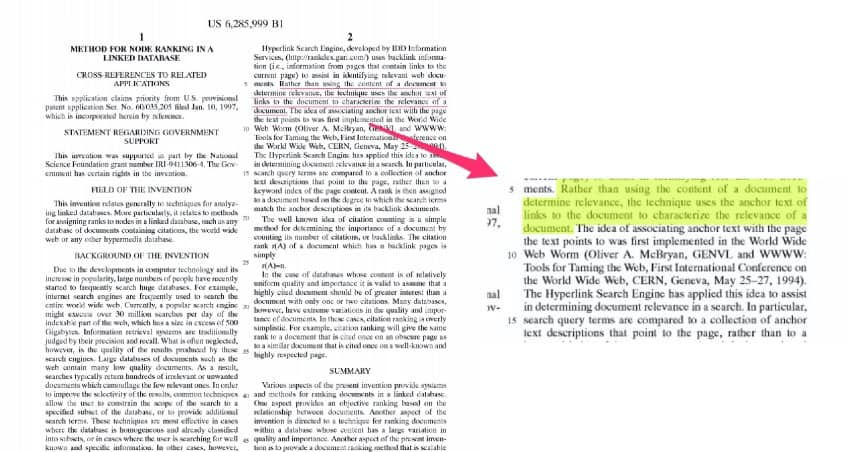
In other words, the founders of Google had patented a system for ranking online content on the basis of link text.
To put it more concretely, if 15 different websites all link to a given page with the link text ‘orbital sander’, Google knows what that page is about.
In other words, link text tells the reader what the linked document is about.
Here’s an example: “One way to grow your list fast is to offer a lead magnet in exchange for an email address”. By turning the words ‘lead magnet’ into link text, I’m telling the reader what the link is about. That helps the reader decide if they want to click on the link or not.
But I’m also telling the search engine algorithm what the linked page is about.
Google was the first search engine to use link text in this way. The idea behind this technique is that link text from other websites is a more objective indication of the content of a page than the metadata on the page itself.
Now that we’ve seen why link text plays such a crucial role in SEO, let’s look at the different types of link text.
Types of Anchor Text
Anchor text (AT) can be divided into different types based on the purpose of the words used in the link.
Naked anchor text is simply a naked URL. It looks like this:
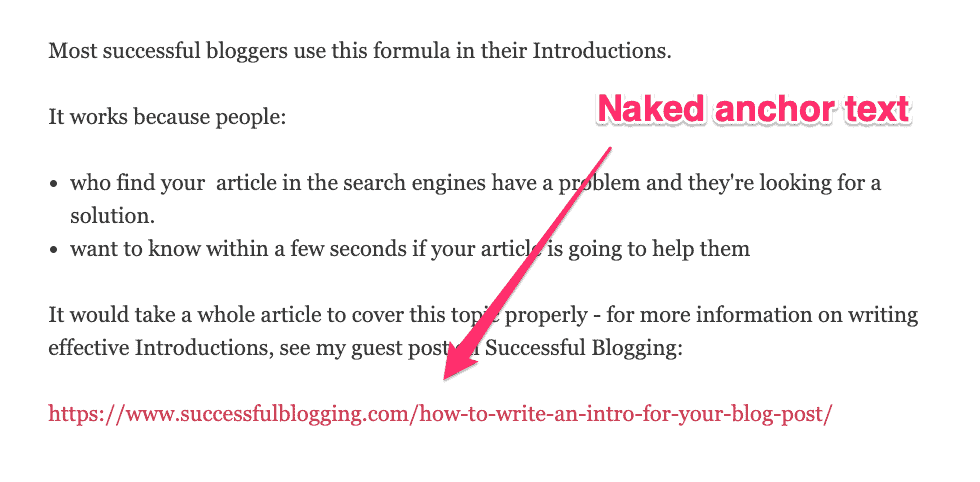
Naked URLs disrupt the flow of your text, so it’s best to avoid them if you can. They can also be quite long and look pretty ugly. Also, with a naked URL, you’re not signaling to the reader or to Google what the linked page is about (other than keywords that happen to be in the permalink). So at the very least, a naked URL is a missed opportunity.
Website name anchor text is where you use the name of a website and link it to the website’s URL:
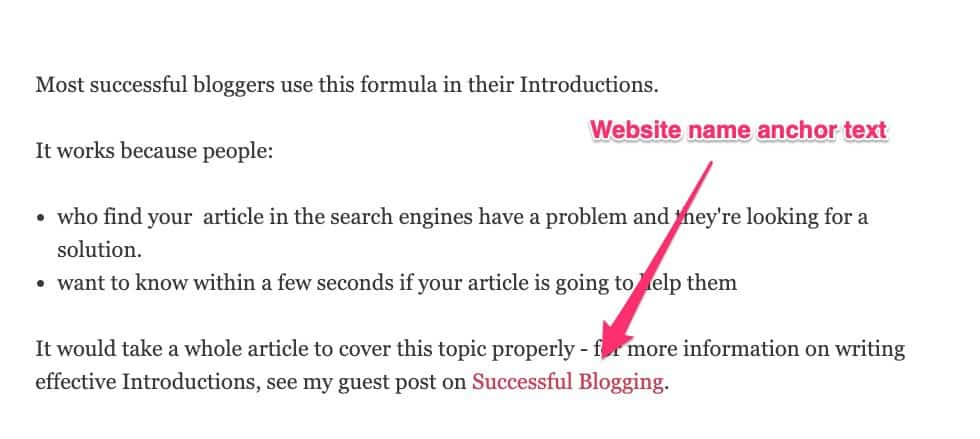
Generic anchor text is when you link to another page using the existing text of your sentence, without making any reference to the content of the page that you’re linking to.
Generic link text is often a call to action, such as ‘click here’ or ‘more information’. Again, it’s a missed opportunity to tell Google and your readers what the linked page is about.
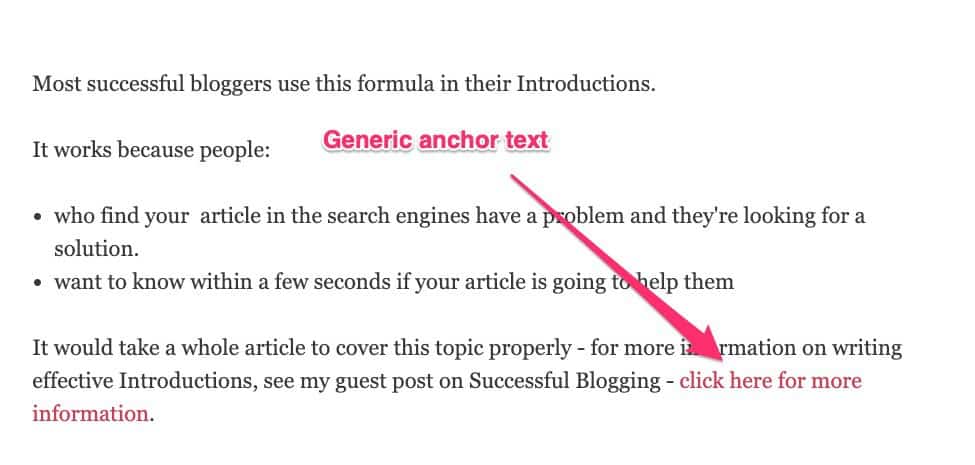
Exact match anchor text is where you use an exact keyword for the page that you are linking to. For example, if you link to a page about ‘email marketing’ using ‘email marketing’ as the anchor text, that would be exact match link text.
You need to be careful about exact match link text. Too much of it and it could look like you’re trying to manipulate the algorithm.
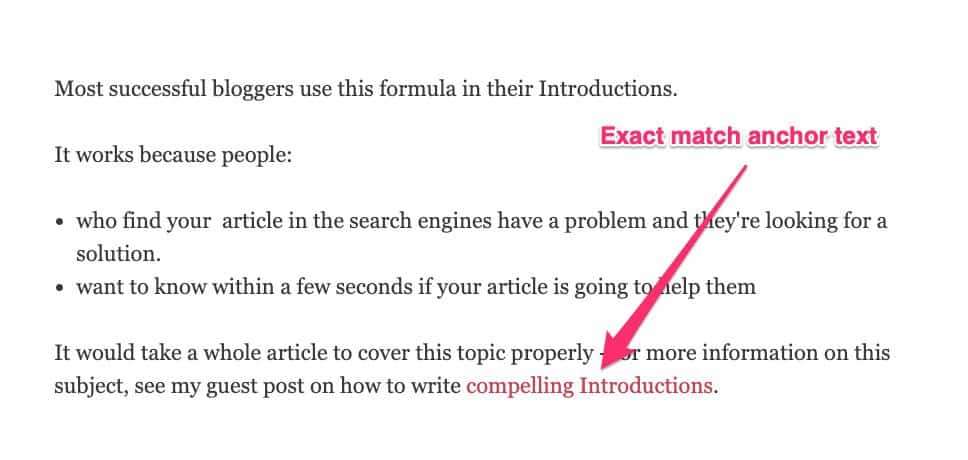
Partial match anchor text is where your link text includes the keyword for the page that you’re linking to, plus another word. For example, if the page you are linking to is about ‘email marketing’, and you link to it with the link text ‘email marketing strategies’, that’s partial match link text.
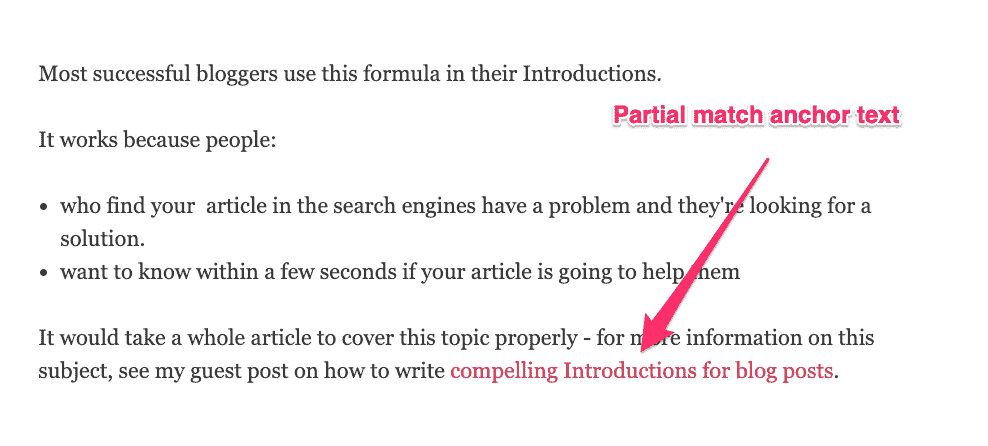
Partial match anchor text is less likely to trigger the Penguin algorithm than exact match link text and is therefore safer to use.
Branded anchor text is where the text you use in the link is simply the name of a brand or organization:
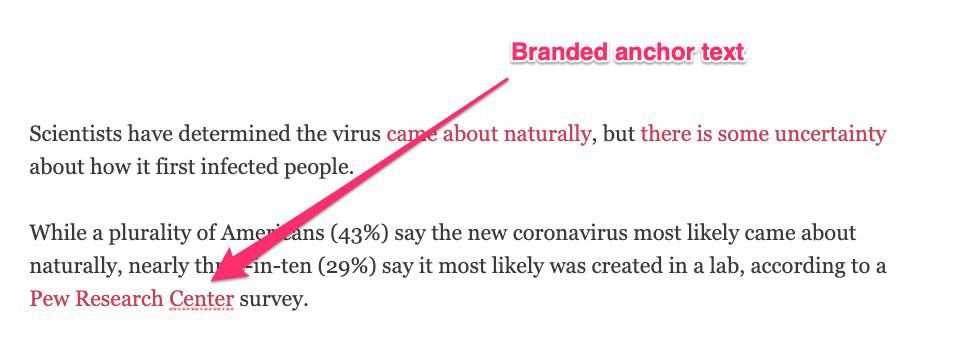
Random anchor text is when you link to a page using random text that doesn’t include a keyword for the page you are linking to:
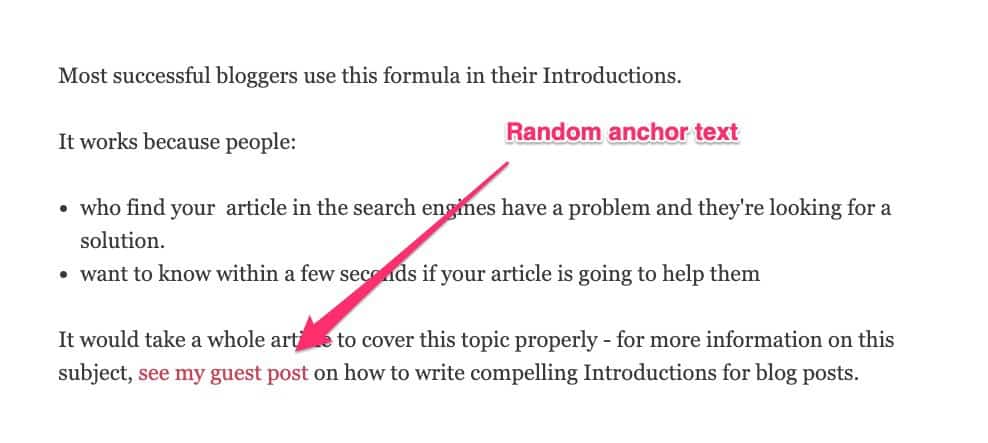
Image anchor text is when you make an image link to another web page, the ‘alt image text’ for that image becomes the image anchor text.
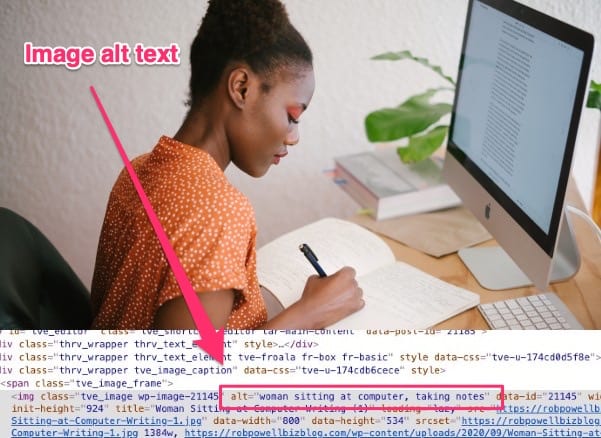
Anchor Text And Google Penalties
Remember that Google patent I mentioned earlier? The one that said Google would use link text in linking pages to work out the relevance of a page to a search query?
Well, it didn’t take long for people in the SEO world to realize they could manipulate the Google algorithm with link text. All you had to do was create multiple links to your page with your target keyword as the link text.
But in April 2012, Google rolled out the Penguin update. It was an algorithm aimed mainly at link building. And one of the things the algorithm was targeting was the practice of stuffing link text with keywords in order to get higher rankings.
Thousands of websites saw their traffic dry up almost overnight. Some websites hit by Penguin never recovered. Others took years to build up their traffic to pre-Penguin levels.
And that’s why you should avoid exact match link text.
Anchor Text and Internal Links
The ‘currency’ that lies at the heart of Google’s ranking system is links from one website to another. Google regards them as a vote of confidence. The more of them your website has, the more authority it has and the higher it will rank.
Internal links, on the other hand, are not part of that currency. They operate solely within a website, so the text you use in internal links is much less much important as an SEO factor than the text used in external links.
7 Anchor Text Best Practices
When it comes to anchor text best practices, there’s a curious conundrum: the link text that will most affect your SEO is that used by other websites when they link to your website.
But any attempt by you to influence those link texts would not be ‘best practice’ because it would mean that those links were not natural.
So the following anchor text best practices will have more effect on the sites you link to than they do on your own site.
- Exact match: avoid exact match link text, whether it’s an external link or an internal link.
- Relevance: your link text should reflect the topic of the page you are linking to.
- Calls to Action (CTA): avoid using CTAs in link text – they don’t help your visitors or Google understand what the linked page is about
- Image alt tags: take one keyword and use it in a descriptive sentence about the image.
- Keyword density: keep the keyword density of your anchor text low
- LSI keywords: use semantically related keywords in your link text.
- Length: there’s no objective standard for how many words you should use in anchor text. But avoid turning a whole sentence into link text. In general, the text you use to link to another page should be the most succinct description possible of the page you are linking to. Using phrases as anchor text is better than using single words, as the latter can look like exact match anchor text.
- Repetition: try to avoid using the same word as link text multiple times on the same page. This can start to look unnatural.
Conclusion
Anchor text is the text used when you link from one web page to another. It tells Google what the ‘linked to’ page is about.
Google regards the text in a link from a page on one website to a page on another website as an indicator of what that page is about.
That’s why link text became a ranking signal and why it ended up being manipulated by spammy websites trying to boost their search engine ranking.
Those practices were brought to an end by Google’s 2012 Penguin Update which targeted unnatural link building.
And that’s why you need to be careful about link text. In a nutshell: keep your anchor text as natural as possible, avoid exact match keywords, and avoid generic CTAs such as ‘click here’.
More Articles About SEO
- Search Engine Visibility – 23 Valuable Tips For More Traffic
- Stuck on Page #2 of Google – How To Get Out in 7 Easy Steps
- How To Rank for Multiple Keywords and Triple Your Traffic
- 13 Types of SEO You Need To Know About in 2022
- Choosing a Domain Name for SEO – 10 Tips For Getting It Right
- SEO Recipe For Success – The 7 Key Ingredients For Ranking Well
- What Is SEO? An Introduction to Search Engine Optimization
- Seven Google SEO Trends To Watch For In 2020
- How To Write SEO Friendly Blog Posts – 17 Important Tips
- Topic Clusters & SEO – 5 Easy Tips For Building Content Hubs
- SEO Off-Page Techniques: 7 Important Facts You Need To Know
- SEO Acronym & What It Means (+ 7 Proven SEO Techniques)
- The Advantages of SEO – 13 Important Facts You Need To Know
- SEO for Blog Posts – 15 Factors To Help You Rank Higher
- Podcast SEO – 5 Facts You Need To Know To Grow Your Audience
- HTTP vs HTTPS – 7 Facts You Need To Know For Better SEO
- 19 SEO Mistakes You Should Avoid At All Costs
- How to Reduce Server Response Time in WordPress (27 Tips)
- Bing Search Engine Stats – Some Interesting Facts & Figures
- The 9 Best Ways To Increase Your Domain Authority
- What Is Page Authority & What Does It Mean For SEO?
- Benefits of SEO for Bloggers – 10 Reasons You Need To Be On Page #1